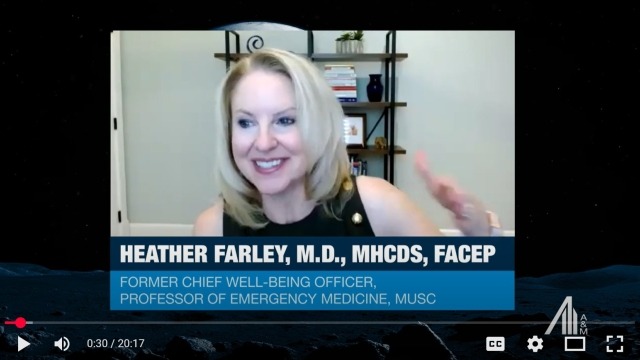Managing Medicare Changes Under the Biden Administration
Part I – Lowering Medicare Age: Are You Ready?
For more than half a century, Medicare had only been available to those 65 and older (or those with qualifying disabilities), but now, the Biden administration is proposing to lower the eligibility age to 60. Under this new policy, an additional 20.8 million people would have access to Medicare coverage. Though the administration has a long list of proposed healthcare changes, lowering the Medicare age would be a historic modification. For the first time, Medicare beneficiaries would be of "working age," and both Baby Boomers and Gen Xers would have access to the same government-sponsored health insurance plan.
For health insurers, planning for a younger, healthier population will bring about new obstacles and opportunities. In addition to the generational shift, addressing fundamental challenges arising from an expanding eligibility pool will require operational acumen.
Challenges of Medicare Age Expansion
Estimating Growth:
- Although growth is generally seen as a positive for health insurers, an increase of new members will impact Stars performance, risk adjustment factors, and other key financial, quality, and operational performance metrics. These metrics drive financial performance and have the potential to create capitalization and solvency issues for smaller plans.
- Medicare Advantage (MA) health plans need to be prepared to meet revised regulatory standards (e.g., network adequacy standards) to avoid negatively impacting customer service and Star ratings.
- It’s unclear how many newly eligible individuals will switch from employer, or individual plans, to Medicare. The inability to predict commercial losses could severely impact premium revenue and needs to be accounted for as part of growth planning and operational preparedness.
Utilizing Employer Conversions:
- Large, multi-line commercial carriers may see higher margin members move to lower margin products; developing market strategies to capture employer conversions will require effective planning for retaining existing members.
- Carriers selling individual-only MA products will not have the option of employer conversions. Small MA-only plans will have to leverage marketing strategies to compete with employer conversions from major health plans.
Ensuring Accurate Documentation:
- Medicare documentation and accuracy involves numerous steps, including proper coding and documentation by a physician. If information is not captured correctly, an insurer may receive inaccurate or underpayment from the Centers for Medicare & Medicaid Services (CMS). Timely documentation will be an important component of Medicare expansion as millions of new enrollees enter the program.
How to Prepare
Proactive preparation, before any potential legislation passes, will give well-managed health plans competitive advantages. MA carriers that develop strategies to attract, retain and engage new enrollees will be better prepared to capture more MA members. Specifically, these organizations should:
Acknowledge Generational Shift
Medicare members will include both Baby Boomers and Gen Xers. Generational differences cannot be ignored and health insurers unwilling to adjust will do so to the detriment of their bottom line.
Gen Xers are more tech savvy; their digital prowess plays an increasing role in their care expectations. Organizations will need to assess the necessary tools to not only connect but engage these enrollees through digital platforms. The focus may begin with attracting new members, but transitions to effective member engagement strategies, which must involve technology.
Serving a younger population will require increased preventive care, wellness, and chronic care management, along with virtual delivery. Older members will need continued access to transportation and mobility, and will rely more heavily on acute, post-acute and palliative care needs.
Ask the Right Questions
Organizations must ask key questions and develop solution-oriented answers. Being intentional and strategic is key.
Operational questions include:
- What needs to change operationally, from product, plan and/or design perspectives? What will the impacts be from clinical care management, coding and documentation perspectives?
- In what ways do we need to alter current benefits to serve Gen Xers?
- What types of technology and tools are needed to actively engage members?
Financial questions include:
- What will the financial impact of this change be to our organization?
- Are we going to see a period of decreased revenues? Could this create earnings pressure? Is there an opportunity to create strong earnings and how must we shift our cost structure to accomplish this?
Distribution questions include:
- Can we acquire Gen X enrollees the same way that we acquired Baby Boomer enrollees? If not, what are the implications and what must we do to be ready?
- What structures are needed to serve and acquire Gen X enrollees?
Quality questions include:
- How will an influx of younger members impact HEDIS performance? Are new methods of member engagement required in an expanded Medicare environment?
Build Scenario Models
Organizations face challenges because of failure to:
- Accurately predict various external factors that could impact their business.
- Develop appropriate optimization and risk mitigation strategies in advance of an external market event.
- Plan for market shifts at a deep operational level; functional teams are often brought into detailed planning too late and changes to the business model are hurried, creating operational issues and putting pressure on departmental budgets.
Fortunately, there are best practices for building detailed scenario models and operating plans. This level of business hygiene is key for any managed care company but especially important in the current regulatory environment.
Get Support
Maximizing revenue opportunities from Medicare age expansion will require implementation and operational excellence. Health insurers that capitalize on this opportunity will understand people, process, technology requirements and associated change management needs to implement specific strategies. A&M’s professionals, with a bias towards action and experienced in solving complex problems, can provide the gateway for maximizing value and driving change across managed care organizations.
Special thanks to Chandler Boynton, Senior Associate, and Katie Thompson, Associate, for their significant insights and contributions.






